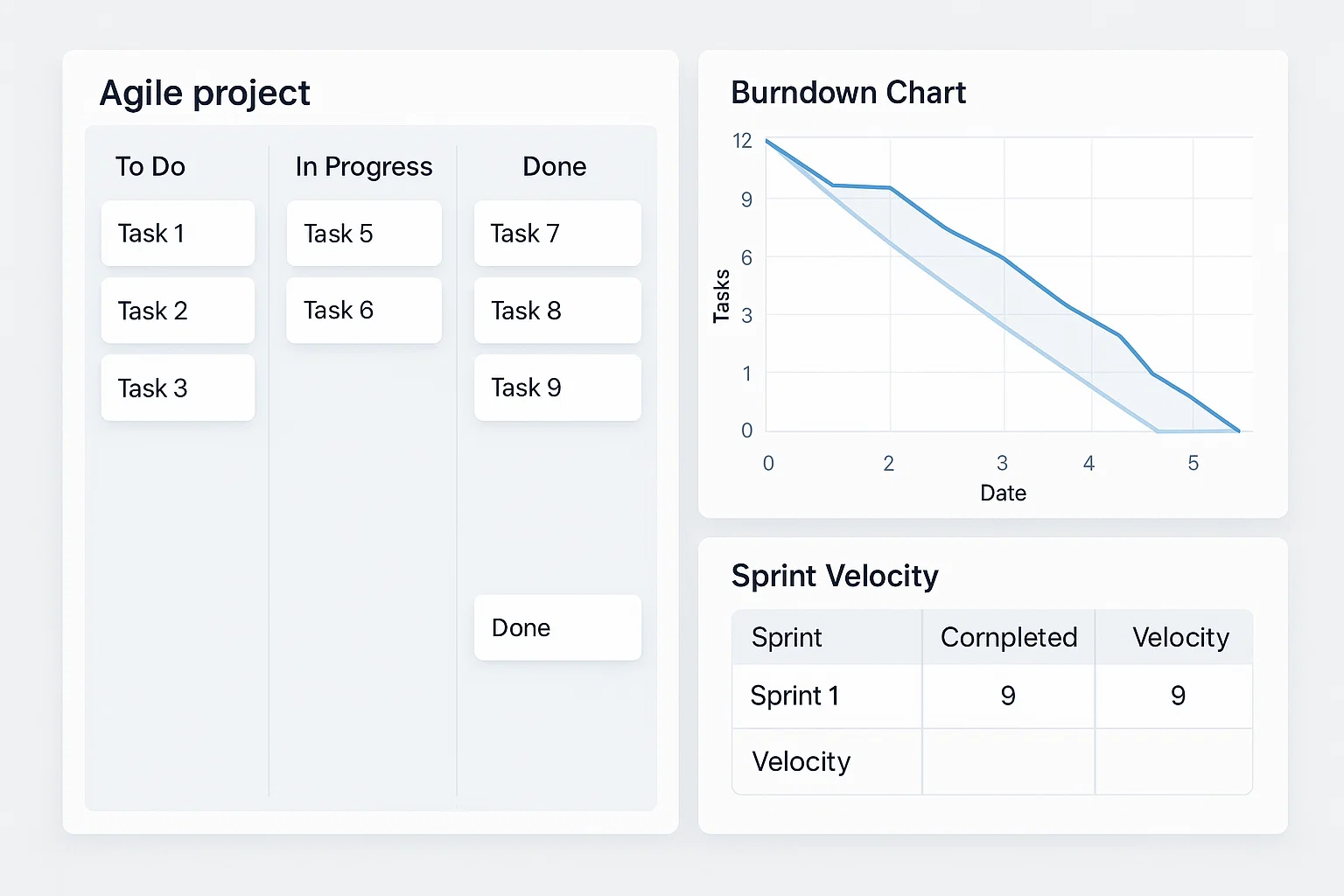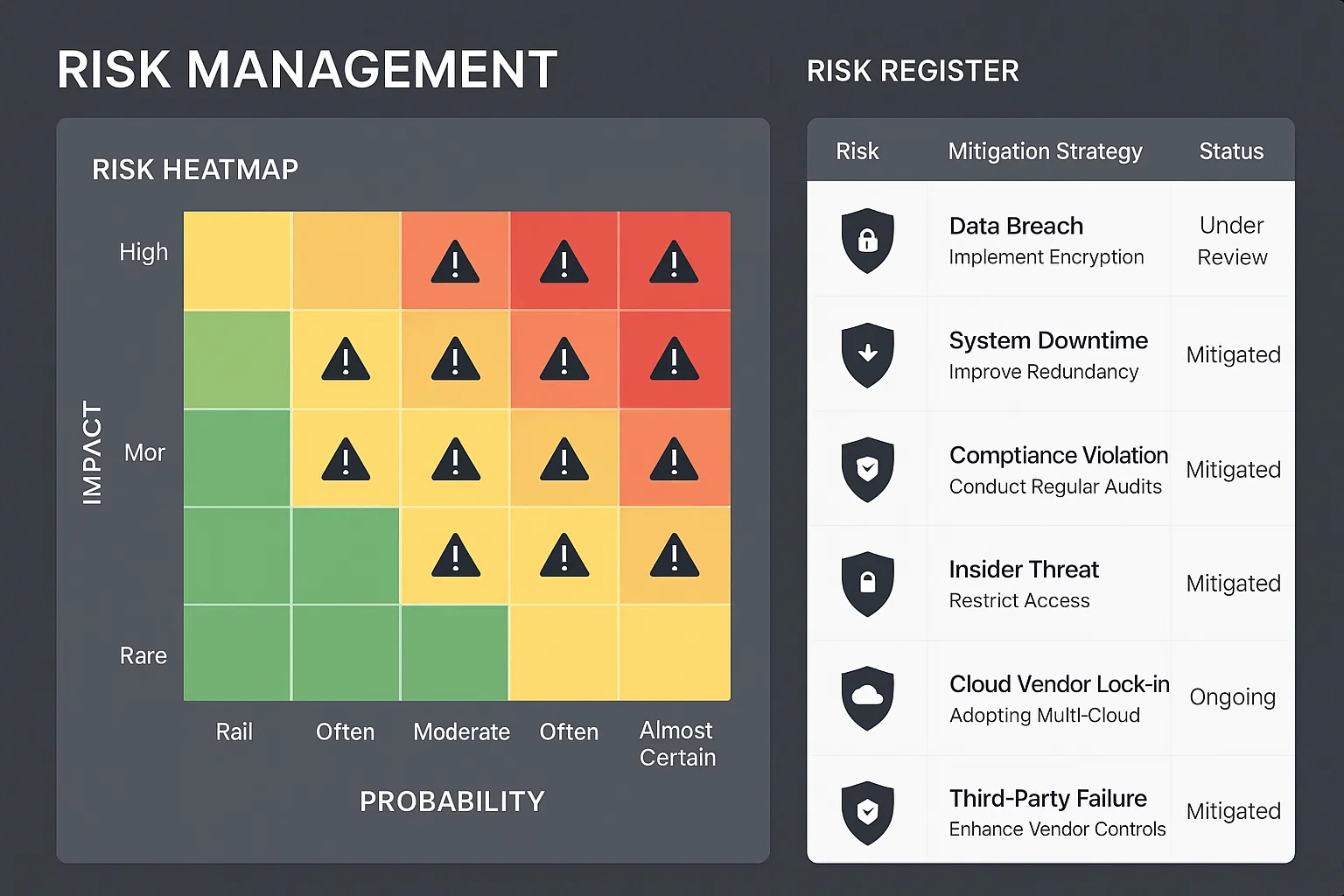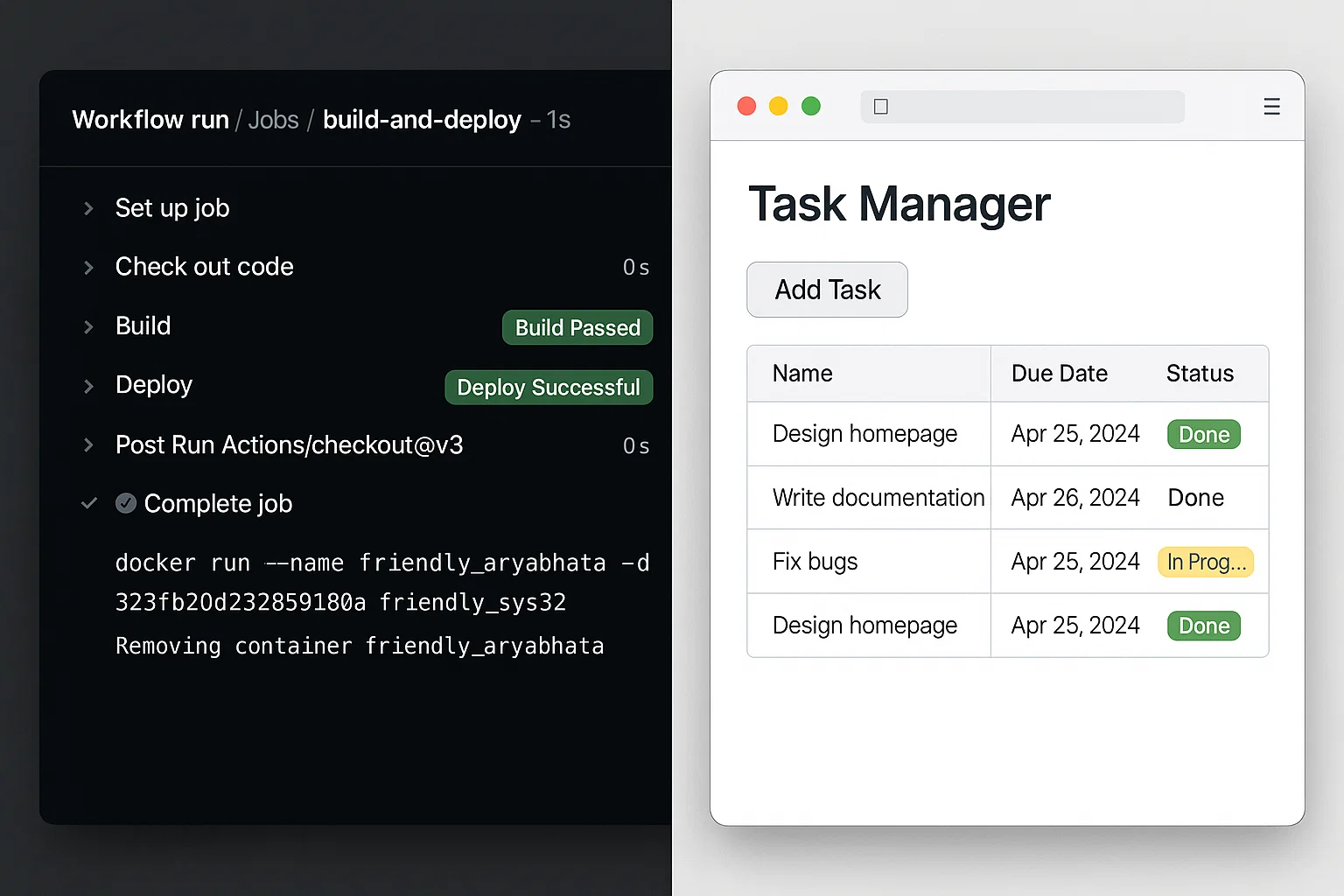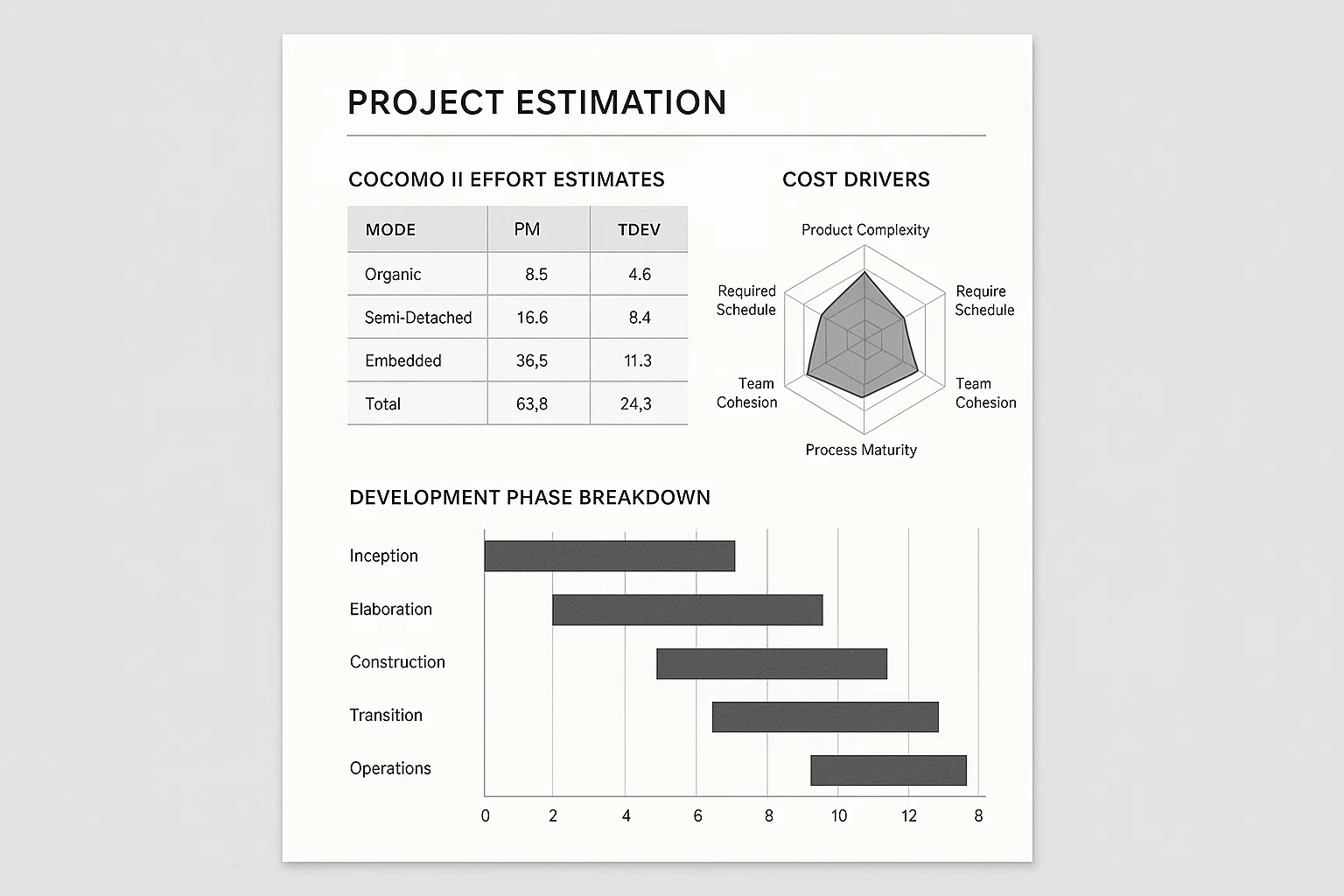Expert Assignment Solutions with 100% Guaranteed Success
Get Guaranteed success with our Top Notch Qualified Team ! Our Experts provide clear, step-by-step solutions and personalized tutoring to make sure you pass every course with good grades. We’re here for you 24/7, making sure you get desired results !
We Are The Most Trusted
Helping Students Ace Their Assignments & Exams with 100% Guaranteed Results
Featured Assignments

Agile Project Lifecycle Implementation with Sprint Tracking Tool
Software Development MethodologiesClient Requirements
The student wanted to get hands-on with Agile methodology, simulating the lifecycle of a software project using sprints. They required a complete structure that included user stories, sprint planning, burndown charts, retrospectives, and a working sprint tracking tool or dashboard to visualize task progress.
Challenges Faced
We ensured the Agile framework was correctly followed across all iterations, but faced some complications while simulating a realistic team environment and scope creep. Balancing sprint deadlines with change requests required careful sprint backlog re-prioritization. Automating the burndown chart updates in real-time also demanded custom logic implementation.
Our Solution
We designed a mock agile team structure, created a backlog in Trello integrated with a custom-built burndown chart using Google Charts API, and tracked sprint goals through a minimalistic web dashboard. Each sprint was documented with goals, blockers, reviews, and velocity tracking. The student’s original project was used as a reference for development.
Results Achieved
A complete, end-to-end Agile simulation that reflected a real-world software project with all documentation and tools in place. The final dashboard allowed easy tracking of user stories, task completion, and sprint health.
Client Review
Assignment S.D.M.101 was a total win. From sprint planning to retrospectives, every part was not only documented clearly but also practically simulated. The burndown charts were smartly updated, and everything felt like a real Agile workspace. Loved how naturally everything functioned!

Software Risk Management and Mitigation Plan for a SaaS Product
Software Project ManagementClient Requirements
The student was aiming to build a complete risk register and mitigation strategy for a hypothetical SaaS product rollout. They wanted to explore technical, business, and resource-related risks, prioritize them using a risk matrix, and propose clear contingency/resolution plans.
Challenges Faced
We ensured a comprehensive set of risk dimensions, but faced difficulties quantifying the probability-impact relationship for evolving tech risks like cloud vendor dependency and data breaches. Properly differentiating inherent risk vs. residual risk and mapping them through risk heat maps added layers of complexity.
Our Solution
We developed a categorized risk register, assigned impact/probability values using qualitative and quantitative risk assessment models, and visualized these on a dynamic heatmap dashboard. Contingency plans were mapped for high-priority threats, and response types (avoid/transfer/accept/mitigate) were justified with industry examples.
Results Achieved
The final plan presented a corporate-style risk strategy, detailed enough to support a real SaaS launch. It received strong feedback during peer presentations for its clarity and depth.
Client Review
I had a great experience working with them on my SaaS risk assessment. The matrix and prioritization model were spot on, and the mitigation plan was laid out just like we’d expect in the industry. The team brought insight into risk handling that I couldn’t have managed alone. Solid A+ work!

Full Stack Development with DevOps Integration (CI/CD Pipeline)
DevOps and Software EngineeringClient Requirements
The student needed to develop a basic full-stack application (e.g., a task manager or booking system) and integrate a DevOps pipeline with continuous integration and deployment workflows. The client required GitHub Actions, Docker, and deployment to a cloud platform like Heroku or Render.
Challenges Faced
We ensured code modularity and version control best practices, but integrating Dockerized builds with GitHub Actions and handling port conflicts during containerization posed some hurdles. Proper pipeline triggers, secret handling, and deployment rollback mechanisms required multiple iterations.
Our Solution
We built the application using MERN stack, containerized it with Docker, and set up GitHub Actions for testing, building, and deploying on every push. Deployment used Heroku CLI with auto-redeployment on successful build. We configured .env secrets, build caches, and workflow status checks.
Results Achieved
The student ended up with a production-ready application and a working CI/CD pipeline from commit to live deployment. Logs, rollback logic, and test coverage reporting were all built-in.
Client Review
Assignment S.D.M.302 was flawlessly done. The GitHub Actions workflows ran like clockwork, and seeing my app auto-deploy with every push was just perfect. The CI/CD implementation made it feel like a true dev environment. I couldn’t be more satisfied!

Software Project Cost & Effort Estimation Using COCOMO II
Software Cost EstimationClient Requirements
The student was interested in understanding cost and effort estimation for large-scale software systems using COCOMO II, and wanted to simulate the entire process based on a software requirement scenario. Deliverables included calculated person-months, cost drivers analysis, and a breakdown of effort across development phases.
Challenges Faced
We ensured the base project description (a complex web portal system) was aligned with the scale COCOMO II supports. However, modeling the cost drivers realistically and translating them into numerical values required careful assumptions. The biggest challenge was ensuring clarity in derivations while keeping estimations relevant and professional.
Our Solution
We took a tailored requirement set, applied the COCOMO II Post-Architecture model, and derived estimates for effort (PM), schedule (TDEV), and cost using average salary rates. Every cost driver was explained contextually and visually represented in a radar graph. Phase distribution was illustrated using Gantt-style timelines.
Results Achieved
A complete and formal estimation document with clearly justified numbers and visuals. It resembled the kind of estimation proposal one might submit in a software firm during the planning phase.
Client Review
This wasn’t just a numbers exercise – it was a full estimation model! Every part from cost drivers to effort breakdown was thoughtful and accurate. The radar chart and Gantt visuals really made the numbers digestible. Working with them on S.D.M.405 was seriously impressive.
